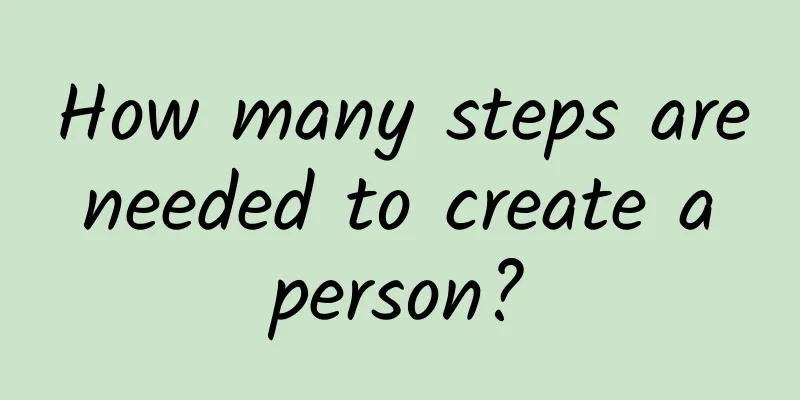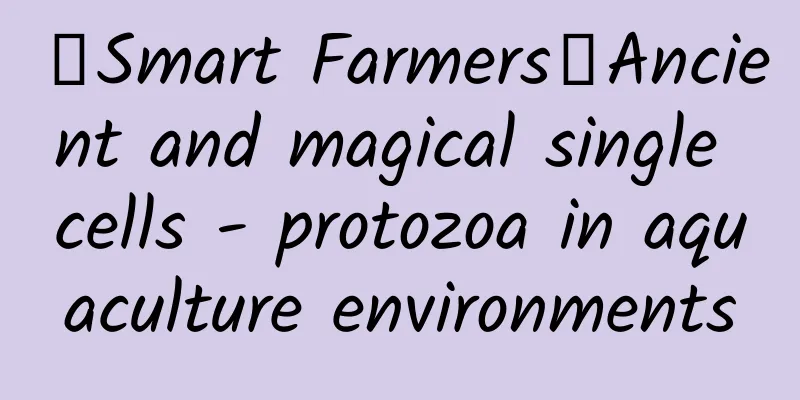How many steps are needed to create a person?

|
“ A mad scientist collected bones, viscera and various body fragments, pieced together a human body, and then injected life into it with lightning, creating an ugly monster on a rainy night. ” This was the fantasy of creating humans that was initiated by British writer Mary Shelley in her novel "Frankenstein" in 1818, and it also created the original image of a mad scientist. Let’s guess first, Frankenstein, is it the name of this mad scientist or the name of the monster? The correct answer is scientist. Two hundred years later, human technology seems to be only one step away from realizing Frankenstein's fantasy. Human tissues growing wildly outside the body, organs kept alive by pumps and valves, chemical babies grown in large vats, brains in vats, life forms spliced together...are they horror stories or scientific miracles? Today's Visual Research Institute will take you on a wild journey of creating humans through science. Friends with poor psychological endurance are advised to watch the show accompanied by their parents. If you want to create a human being, how should you start? Let’s ask the students who said “get married” to leave first. When it comes to creating a human, scientists have tried two approaches: One is to build a human body first, and then stuff something called life or soul into it. It's probably similar to building a computer first, and then installing the system. In the 19th century, when Mary Shelley wrote Frankenstein, scientists were trying to do just that. They all believed that the secret of life was electricity. In 1780, Italian anatomist Luigi Galvani discovered that passing electricity through a dead frog would cause its muscles to contract. The corpse moved, which was equivalent to being alive. After that, scientists became crazy about playing with electricity, electrocuting cows and pigs to death, and watching the animal corpses grimacing under the stimulation of the electric current. The experiment was open to the general public and could be visited at will. Such an exciting activity immediately attracted a large number of spectators. But soon they got tired of electric animals, and some brave scientists got humans. On November 4, 1818, Scottish chemist Andrew Ure attached a 270-volt electrode to the body of a executed prisoner. When he connected the power, the onlookers saw a strange phenomenon that they would never forget: “ After he powered on the corpse, it seemed to shudder, and its fingers were very flexible, like the hands of a violinist. Every muscle on the corpse's face was moving, and expressions of anger, fear, despair, pain, and joy appeared on the corpse's face at the same time. ” This scene is not only inappropriate for children, but also for normal people. So this horror farce lasted for several years, and was eventually stopped because it was too evil. No experiment has ever achieved the idea of "injecting life into a corpse." The idea of "first make a body, then inject the soul" doesn't work, so what about putting together living organs?" In 1907, American embryologist Ross Harrison isolated neurons from amphibian embryos and immersed them in nutrient-rich culture medium, and found that they could continue to develop and differentiate, proving that human tissues can survive and develop in vitro. This in vitro culture technique caught the attention of another person: French doctor and organ transplant pioneer Alexis Carrel. Using Harrison’s technique, Carrel created an extract from dog embryonic tissue and successfully grew chicken heart tissue outside the body. By 1911, he was able to keep chicken hearts beating outside the body for several weeks. In the 1930s, aviator Charles Lindbergh designed a pump for this technology that could fill organs with blood to ensure that transplanted organs would not die. They began to mythologize this technology, suggesting that it would sooner or later lead to the immortality of life. In 1938, Carrel and Lindbergh, dressed in black robes and white hats, appeared on the cover of Time magazine with the pump they had made, with the headline "They Are Searching for the Fountain of Youth." But the person who truly achieved immortality outside the body was a black woman named Henrietta Lacks. To be more precise, it was her cells. In 1951, American doctor George Gey isolated cancer cells from the 31-year-old cervical cancer patient and cultured them. These cells have extremely strong vitality and continue to replicate and proliferate. They are shared with laboratories around the world as standard cell lines for human cell experiments and used for testing drugs, studying viruses and genetic research. Scientists call them HeLa cells. So far, more than 50 million tons of HeLa cells have been proliferated worldwide. This tells us that it is not only entirely possible for human tissue to grow in vitro, but it can also continue to "reproduce". Henrietta Lacks died in 1951 and was buried in her family yard. Her tombstone reads: "Her cells will benefit mankind forever." Let us think about a question here: Henrietta Lacks died in 1951, but her DNA has spread all over the world in HeLa cells and is still replicating. So is she dead or alive? Now that it is possible for human cells to survive outside the body, does allowing cells to grow into organs bring us one step closer to creating a human being? The scientific community once believed that although cells in vitro could survive, they were just a group of cells and could not form the complex interactions between cells and between cells and tissues in the body, and therefore could not develop into organs. But this difficulty has been gradually overcome in the past 20 years. One technical route is to grow cells into specific organs by attaching them to special scaffolds or using methods such as 3D printing. Scientists have tried to make lungs, kidneys and hearts. Another way is to first use embryonic stem cells to cultivate organoids, which have similar structures and some main characteristics of organs. Then, in some way, let the organoid "think" that it is part of the whole embryo and develop into the real organ that should be in the embryo. In 2013, Takebe Takasuke's team at the School of Medicine at Yokohama City University in Japan made such an attempt: they cultured human embryonic livers, also called "liver buds," in vitro and then transplanted them into the skulls of mice. These liver buds not only survived, but also received growth signals from the mouse tissues and began to grow blood vessels. These are human blood vessels. What if we could grow these organs in animals the same size as humans, like pigs? Let's imagine this scenario: a person needs a new liver, kidney, pancreas or other organ, and you use his cells to grow organ seeds, transplant them into pig embryos, and they grow into the corresponding organs in the piglet's body. The researchers actually succeeded with a few moves. In 2017, a team led by biologist Juan Carlos Izpisúa Belmonte of the Salk Institute in California created pig embryos containing human cells. Within four weeks, the human cells developed into precursor cells for muscles and some organs in the pig embryos. Then… the experiment was stopped. In theory, if the culture continues, pigs with human tissues will be born. If we follow this route, will we be able to piece together an artificial human using artificial organs? We seem to have returned to Frankenstein's understanding of life: the body is a mechanical device, a machine covered with skin. You make up the limbs, I make up the head, and as long as the blood vessels, nerves, and endocrine function normally, it can become a living being. Unfortunately, humans have not yet made a breakthrough in head transplant technology. Top experts can connect the spine, muscles, blood vessels and even the spinal cord, but the immune response will most likely kill the stitched monster. And we must also face the Frankenstein question: What is this person? Is he a person who should be accepted and embraced, or a monster that normal people cannot understand? However, the knowledge and technology of cytology make it possible to hatch a person from a cell. It is closer to the "natural development" of our human concept than the stitched monster. In 2006, Shinya Yamanaka and Kazutoshi Takahashi successfully created induced pluripotent stem cells. Simply put, skin stem cells are directly transformed into embryonic stem cells under the action of certain reagents. In 2009, Kristin Baldwin's team at the Scripps Research Institute in La Jolla, California, succeeded in creating fully developed mice using only mouse skin cells. Although the research was conducted in mice, the scientists agree that there is no clear indication that the conclusions would not apply to human cells. This means that our body is a "human factory". Every cell in our body can grow into another "person". Or, in the way of George Church, a synthetic biologist at Harvard University, these possible life forms in the future are called "synthetic human entities with embryonic characteristics". We can configure its life attributes, such as removing its genes for brain development, so that it will not feel pain or perception, it will have the same organs as normal people, it can be mass-produced... it can serve your health research, your organ transplant, or DNA continuation. However, scientific questions must ultimately face philosophical and ethical scrutiny. What exactly is this life that has grown apart from your body? What is its relationship to you? What do you have the right to do with it? Or what do you not have the right to do with it? Science ultimately raises questions that science itself cannot answer. So far, humans have been very conservative in dealing with the ethical challenges brought about by these sciences. For example, experiments on embryos can only be performed on embryos that are less than 14 days old. The restriction comes from a 1982 British ethics committee report, which based its argument on the fact that 14 days after fertilization is considered the time point when unique personhood is formed. The limit has been followed by many countries since then, but the scientific community remains wary of breaking it, even though many argue that the 40-year-old limit was based on misjudgments and has hampered the progress of some important research. After all, in front of science, humans are too much like a child playing with a bomb. We don't know when a mistake will lead to a fatal error. Source: Vision TV |
>>: Quantum health products, anti-aging functional foods? Pseudo-concepts, real traps!
Recommend
Tips for getting traffic from Tik Tok live streaming!
What is the essence of live streaming sales? In f...
People's Daily Comment: Chinese films should have the capacity to accommodate "one star"
Going to Douban to check the ratings before watch...
What can Uber learn from Airbnb in international expansion?
As Silicon Valley's hottest startups with a v...
What are the elements of an effective online product promotion plan?
1. What are the elements of an effective online p...
Gartner: Mobile app privacy tracking opt-out rate is expected to drop from 85% to 60% by 2023
[[438580]] Research firm Gartner published a fore...
The price of experimental monkeys has soared 20 times! Why is it so hard to find a monkey now?
The price of experimental monkeys has risen from ...
Why can't billions of stars illuminate the entire universe?
This ancient problem is known as Olbers' para...
Analysis of Soul and Tantan’s competitors
The life of contemporary young people is basicall...
In the future, this material will be used to build houses, which will be warm in winter and cool in summer without air conditioning.
Produced by: Science Popularization China Produce...
New media operation: data mining method!
Unlike traditional marketing and promotion method...
Spring Festival holiday arrangements for 12 app stores
360 Mobile Assistant Application & Game Revie...
How to improve your user operation system? Here are 4 ways
We can think of the user operation system as a bi...
Patent exposed! Google is about to launch a foldable smartphone
On March 14, according to foreign media mspowerus...
How much does it cost to invest in the Hailar Furniture Mini Program?
How much does it cost to attract investors for th...
Apple Watch has a new bug that restarts when you ask Siri about the weather
According to foreign media reports, Apple Watch h...









